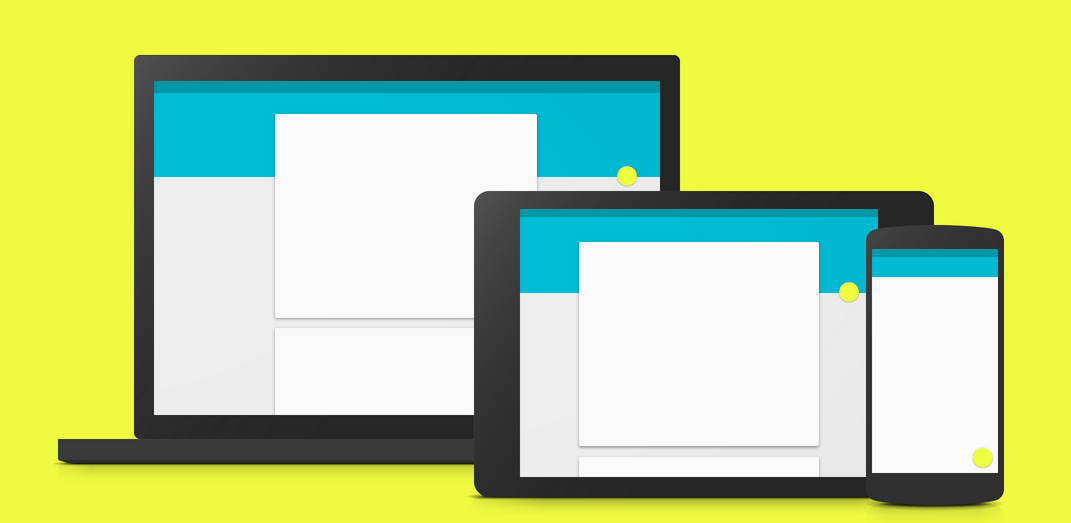How to Become a Rock Star Front End Developer

Good front-end developers are always necessary. There are a lot of low quality specialists, which perform different basic tasks, but there is a lack of rock star developers. And it is no wonder. Just look at job postings and you will see how much front end job descriptions vary. Despite the large number of web design schools and coding courses, unemployed high quality specialists are rarity. In this post, we will tell about all essential skills you will need on your path to a rock star front end web developer.

After looking through several job descriptions, you will understand that HTML, CSS and JavaScript are the basic skills required for every front end developer. For instance, Front End Web Development learning courses by General Assembly consists of HTML, CSS, Intro to Programming using JavaScript, Beginnings of jQuery, and Responsive design principles. Such courses will help you figure out the core principles of front end development, but they lack a lot of essential details: nothing relating to JavaScript frameworks, Sass, command line or version control. Also, there is no information about PHP or node. Without this knowledge you will never become a rock star front end developer. The situation is the same with other web design schools and courses. All of them teach HTML, CSS, and JavaScript, but lack some other necessary topics. On the picture below, you can see all skills required for every topnotch front end developer.
Many of this skills never appear in front end coding courses. Lets give explanations to all of them.
-
MV* or MVC Javascript framework help you organize code. There are about thirty possible solutions, and the most popular are angular.js and backbone.js. The first one is made by Google.
-
Unit Testing helps developers write tests for their applications. Jasmine and Karma are two major solutions. Unity testing skill is always a nice addition to your resume.
-
-
CSS tools are much easier to learn compared to frameworks.
-
Precompilers or preprocessors have a lot of advantages. They help developers produce cleaner code and maintain organization. Sass, Less, and Stylus are the most popular solutions.
-
CSS frameworks help optimize the workflow. In order to do this, they provide developers with built-in grids and other CSS components. Bootstrap and Foundation are among popular solutions.
-
Responsive design makes websites visible and user friendly on all devices. Being among latest web design trends, it is extremely important for rock starr front end developers.
-
-
Front end build tools are required for the optimization of files sizes and workflow efficiency.
-
Bower is required for package management. It organizes all the libraries, assets and manages all the parts of the project.
-
Yeoman.io runs in the command line and helps developers start projects quickly.
-
Task Runners compress files and acts as compilers for Sass or Less. There are a lot of different plugins to boost their core features. The most popular solutions are Grunt and Gulp.
-
Javascript Module Loaders bundle up dependencies. Require.js and Browserify are among most popular solutions.
-
That’s a lot of work. So try to be patient and persistent on your path to rock starr front end development. All the aforementioned skills are necessary to create the user-facing side of any website. At the end of your path you will be able to:
- work with user facing code;
- optimize web applications
- maximize website’s speed and scalability;
- Create easy-to-use apps and develop prototypes;
- create amazing user experiences.
The question is how to become a high quality front end developer with or without formal education. First of all you should master the basic knowledge and aforementioned technologies. It is also extremely important to stay up to date with current best practices and get all the necessary experience by building websites based on the latest technologies. Keep in mind, that being involved with the open source community is also a plus, because it drives the massively collaborative world of front end development. Last but not least is your portfolio. All your awesome works will help you stand out from the rest and get the desired job.
Keep in mind, that web developers always have hundreds of tools, technologies and solutions to perform their tasks. By trying new methods and working the favourite ones, you will empower your theoretical knowledge and get the important practical skills. But what to learn first and what should be the next?
Table of contents
Languages
It is obvious, that you should start with languages. Learn HTML, then master CSS and start JavaScript. These three languages are the base on your way to top front end development. As mentioned before, all online web design classes includes HTML, CSS and JavaScript into their courses.

HTML, CSS and JavaScript
HTML isn’t a programming language per se, but it is used to describe how elements on a page should be laid out. Another function of HTML consists in providing browser with a list of all the files (first of all CSS and JavaScript), that are required for the appropriate website’s look and feel.
In its turn, CSS describes the look of every page. It controls colors, fonts, and even some animations. CSS is not a programming language. Being a text document, it is responsible for making a website’s look great.
Of these three web languages, only Javascript is the one that is considered an actual programming language. It controls interactions on a site. You don’t need much JavaScript for static websites, but it is widely used for dynamic ones. Thus, dynamic websites require an in-depth understanding of Javascript.
Web design techniques
Learning web design techniques is your second stage. Start with responsive design, then go to modern design languages and finish the stage with frameworks.
With the wide use of smartphones and tablets, responsive design should be among your key approaches to the work you do. People expect websites to look perfect on every device, and you are able to satisfy this need only with the help of responsive design principles.
Under design language, we understand a set of principles used to unify and organize the look of a product. Material Design by Google is one of the most illustrative examples. It is a modern design language, developed for mobile apps, responsive websites, and other digital products. Material Design is used to unify user experience on different devices within Google ecosystem and beyond.

Material Design
Frameworks are required for structuring and building websites. They rely on custom CSS classes, so all the content looks great on every device. With the right framework, front end developer is able to follow modern design principles and best practices of the industry.
Web apps
After you have mastered web design techniques, it is time to start your acquaintance with web apps. Javascript frameworks and templating are the core aspects you should understand to become a rock star front end developer. User profiles on social networks have the same layout, because of templating engines which are used to create dynamic websites. By mastering the use of templating engines, you will make the first step in building a web application. Here are a few examples:
- and are frameworks with a templating engine;
- and are templating engines

Angular
Peripheral skills
Of course, the aforementioned steps are not enough to become a high quality front end developer. You should also master a lot of peripheral skills. For example, a source code control. Git helps software developers around the world maintain the code of complex projects.
Web performance is another important topic for every front end developer. Keep in mind, that web site should not only look good, but it has to work fast. With the understanding of browser rendering core principles, developer is able to deliver a fast and efficient website to its users.
The best sources of necessary knowledge
Now when you know what to do to become a rock star front end developer, we’d like to show you the most reliable sources of knowledge. Website development schools, online web design classes and courses have flooded the Internet. There are both paid and free solutions, which can be equally useful. Today, you can find almost all kinds of learning materials: written courses, video tutorials, webinars, individual live practices via Skype, and tons of PDF documentation. Let’s start with the basics.
CSS & HTML
-
. With Codecademy, you will be able to learn HTML and CSS for free. This coding school provides a lot of interesting courses. For example, you can learn how to create a website from scratch. Codecademy also provides the ability to create a retail application or master Javascript, jQuery, Python, Ruby, or PHP. The duration of HTML and CSS course is 7 hours. It is aimed at beginners.
-
Lynda. Learn how to use HTML to create properly structured sites with this . The course covers the foundations of markup language, its web semantics, mobile devices aspects, HTML5, ets. In its turn Lyndacan help you learn how to create CSS styles. In addition, you will be able to explore best practices of responsive design and different techniques for styling grids, fonts and forms, as well as different CSS layout techniques.
-
Tuts+. Last but not least is Tuts+. The duration of is 30 days. It covers all possible nuances of both languages, but requires a lot of time.
PSD -> HTML
With the below courses you will be able to learn how to turn your Photoshop designs into valid HTML & CSS. This knowledge is essential for every web developer. If you are going to become a rock star front end specialist, you should pay all your attention to this topic.
-
video guide
CSS Frameworks
CSS frameworks allow developers to use more standard-compliant Cascading Style Sheets. Basic CSS frameworks are based on a grid. More functional solutions also come with additional features and JavaScript based functions. All of them are unobtrusive and design oriented. There are a lot of different solutions designed to reduce developer’s headache. The below CSS Frameworks are often used in modern web development. There are dozens of web design schools and courses covering this important aspect of front end development. And don’t forget to check our post about CSS Frameworks. You will find all best solutions there.
But let’s go back to courses, schools and education materials. The 960 Grid System is a popular CSS framework. It relies on commonly used dimensions based on a 960 pixels width. There are three variants of 960 Grid System: based on 12, 16, or 24 columns. These are the sources of knowledge:
Another popular solution is Bootstrap. This HTML, CSS, and JavaScript framework is widely used for developing responsive websites. You can download and use Bootstrap for free. You can start learning Bootstrap with one of the below links:
-
: an overview, download guide, how to and use, basic templates, examples, etc;
JavaScript
Learning the fundamentals of JavaScript is also widely available. With dozens of online web design classes everyone can master the programming language of the Web. You can check our “How To Become A JavaScript Developer” post for the detailed instructions, or check the below links:
Books
Web development schools and courses are extremely important on your way to rock star front end development, but you shouldn’t forget about books. Often, they provide more detailed information, so you can use them to fill all possible gaps left after online classes. These are the best books about front end development:
-
is focused on the actual design process. The author speaks about mid-size and large projects and explores new trends and solutions. Besides front end, the book covers such topics as back-end, typography, customer support, psychology, and content strategy. The Smashing Book 4 costs $39.
-
is the book that doesn’t read like an eighties manual. It is aimed at very wide audience. Besides programmers, HTML & CSS book make it easy for the designers, bloggers, managers, and marketers to learn about the code. With this book, you will be able to learn how to read and write HTML5 and CSS3; create perfect structures for web pages and sites; prepare visual content for the web; control typography and layout. In addition, you will get a lot of helpful advice and hints alongside the code. The book costs $30.

HTML & CSS book
Useful blogs and resources
Blogs have become the source of the latest achievements not only in web development, but in other branches of life. In our case, bloggers try to spread their knowledge as wide as possible, so you should take the full advantage of blogs and social networks. You can also follow rock starr front end developers on Twitter. Below you will find the most reliable front end development and web design related blogs and resources.
Now, when you’ve mastered all the basic aspects of front end development, we recommend you to read one interesting article at Tuts+. The article is called “”. The author tells how to increase current developing skills and provides a lot of useful tips. He explains Rapid Interaction Development and helps reader understand its true value. Then there are parts about Pattern optimization and Hyperfocused Mini-Sprints adoption. The author also covers such topics as Temporarily block Go-To websites, Minimized interruption, and, of course, Competition and Reward. Section about Open Source Community completes the article.










